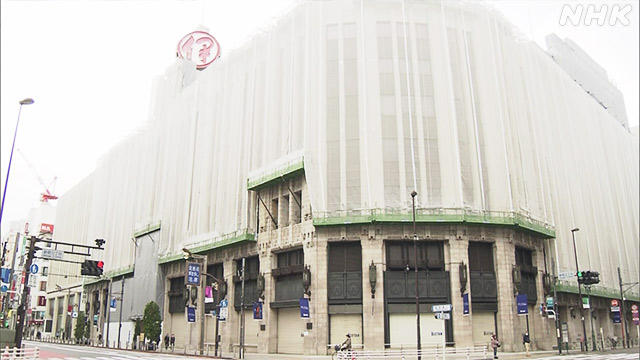Due to the COVID-19 pandemic, the Japanese government announced a national lockdown for preventing the cluster infection from April 4th. Most of the industries were facing a hard time to survive, even the department stores should temporarily close which was -72.8% compared to previous years.

| Location | Sales(Thousand) | Percent(%) | Compared previous year (%) |
|---|---|---|---|
| National | 120,893,986 | 100.0 | -72.8 ( -73.1) |
| Top 10 City | 77,268,061 | 63.9 | -76.0 ( -76.0) |
| Sapporo | 3,571,698 | 3.0 | -69.8 |
| Sendai | 2,213,561 | 1.8 | -62.1 |
| Tokyo | 30,114,090 | 24.9 | -76.1 ( -76.1) |
| Yokohama | 7,196,643 | 6.0 | -73.5 |
| Nagoya | 7,701,073 | 6.4 | -73.2 |
| Kyoto | 4,664,225 | 3.9 | -75.2 |
| Osaka | 14,365,645 | 11.9 | -78.9 |
| Kobe | 2,327,066 | 1.9 | -79.8 ( -78.6) |
| Hiroshima | 2,850,940 | 2.4 | -68.2 |
| Fukuoka | 2,263,120 | 1.9 | -85.8 |
| Others | 43,625,925 | 36.1 | -64.2 ( -65.4) |
| Hokkaido | 514,598 | 0.4 | -46.3 |
| Tohoku | 2,780,718 | 2.3 | -47.5 ( -55.0) |
| Kanto | 15,973,470 | 13.2 | -69.3 ( -71.1) |
| Chubu | 3,403,422 | 2.8 | -64.7 ( -66.7) |
| Kinki | 7,191,999 | 5.9 | -58.7 ( -58.4) |
| Chugoku | 4,062,359 | 3.4 | -56.4 |
| Shikoku | 2,337,078 | 1.9 | -67.1 |
| Kyushu | 7,362,281 | 6.1 | -62.9 |
Data from JAPAN DEPARTMENT STORES ASSOCIATION
Because of this lockdown policy, there were no foreign travelers who came to Japan, the number of inbound customers was -99.5% and the total sales rate was -98.5%. On the other hand, for daily life use, food products reached 40% growth, some stores also provide food delivery service to keep sales performance.
Resource: 令和2年4月 全国百貨店売上高概況
